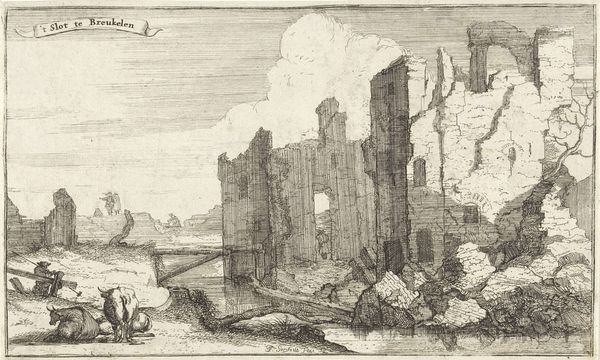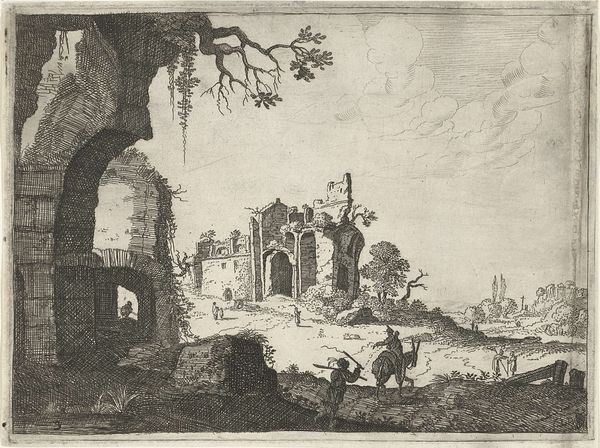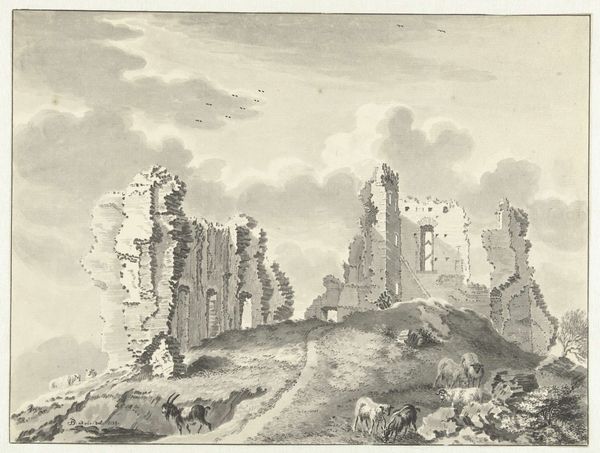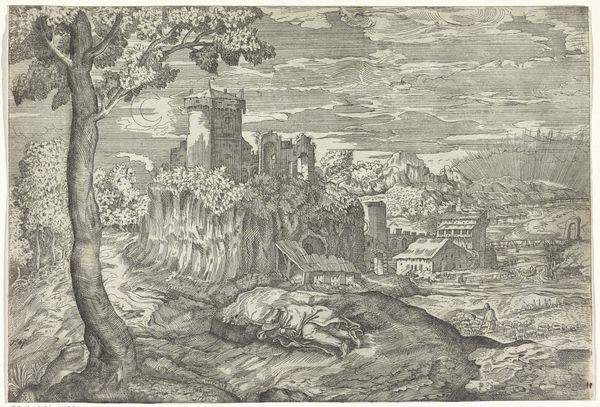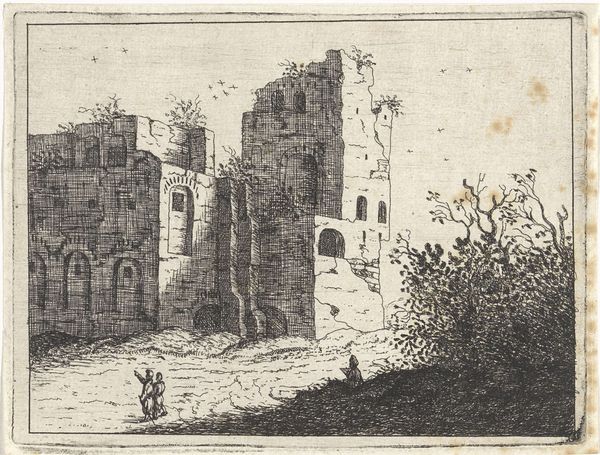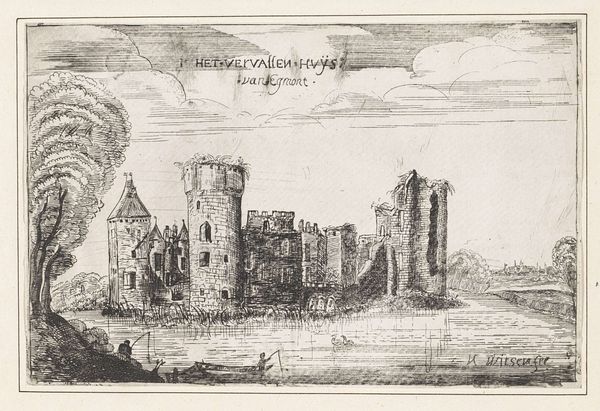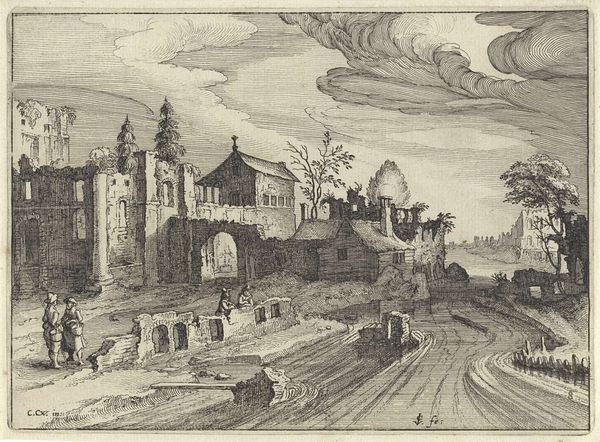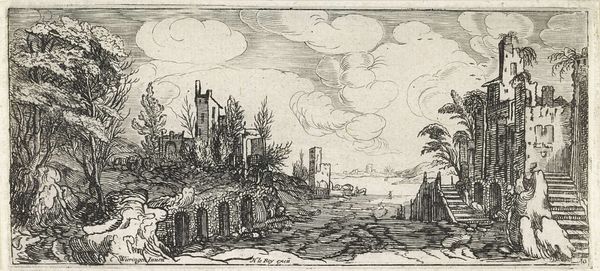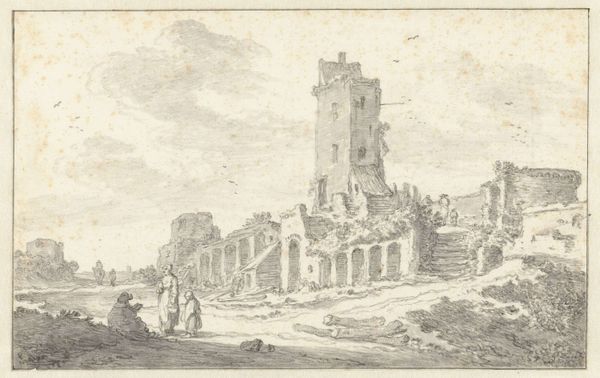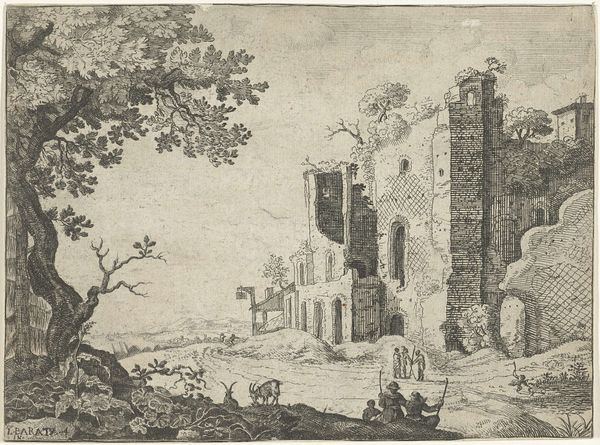
drawing, print, pen, engraving, architecture
#
drawing
#
baroque
# print
#
pen sketch
#
landscape
#
pen
#
engraving
#
architecture
Dimensions: height 163 mm, width 222 mm
Copyright: Rijks Museum: Open Domain
Curator: This is "Goatherd by a Castle Moat," a print made before 1656, by Laurens Barata. Editor: It strikes me as an exercise in contrasts—a crumbling, monumental castle alongside the humble goatherd, rendered in incredibly fine lines. There’s a distinct sense of transience versus permanence. Curator: Absolutely. Barata is placing these crumbling architectural symbols within a broader socio-political landscape. Think about the power structures inherent in these castles, the histories of conflict, and now their decay contrasted against the timelessness of rural life and labor. How does this resonate within larger dialogues about class, ownership, and the cyclical nature of societal power? Editor: Visually, I'm drawn to the cloud overhead. It almost mirrors the form of the crumbling tower; a puff of nothing holding equal weight to centuries-old stone. Considering the goatherd, goats have always symbolized, at least in some cultural spheres, abundance, sustenance, but also scapegoats. What cultural resonances were at play in 17th century representations? Curator: Seventeenth-century Dutch art, particularly landscape, often romanticizes the pastoral while quietly negotiating a complex relationship with burgeoning capitalist and colonial enterprises. The goatherd represents an ideal of simple virtue and hard work, a subtle justification for the era's expanding social and economic disparities, especially as these images were increasingly being consumed by an urban elite. Editor: I see. The ruined castle can also be interpreted symbolically. As monuments erode and history shifts, this calls forth cycles of death and renewal within societal and even psychological frameworks. What impact would this scene have had on contemporary audiences familiar with allegories? Curator: Exactly! Ruins frequently represented vanity and the transience of earthly power, fitting with Protestant iconoclasm of the period. The castle may function less as a celebration of historical authority, and more as a warning against earthly arrogance and impermanence. Editor: Thinking of it as a cautionary tale gives a new depth. Seeing the composition with these subtle clues makes you wonder how many are lost without knowing the symbolism of the time. Curator: It highlights the ongoing negotiation between image and interpretation across historical and cultural distances. The dialogue continues, enriched by diverse viewpoints.
Comments
No comments
Be the first to comment and join the conversation on the ultimate creative platform.
